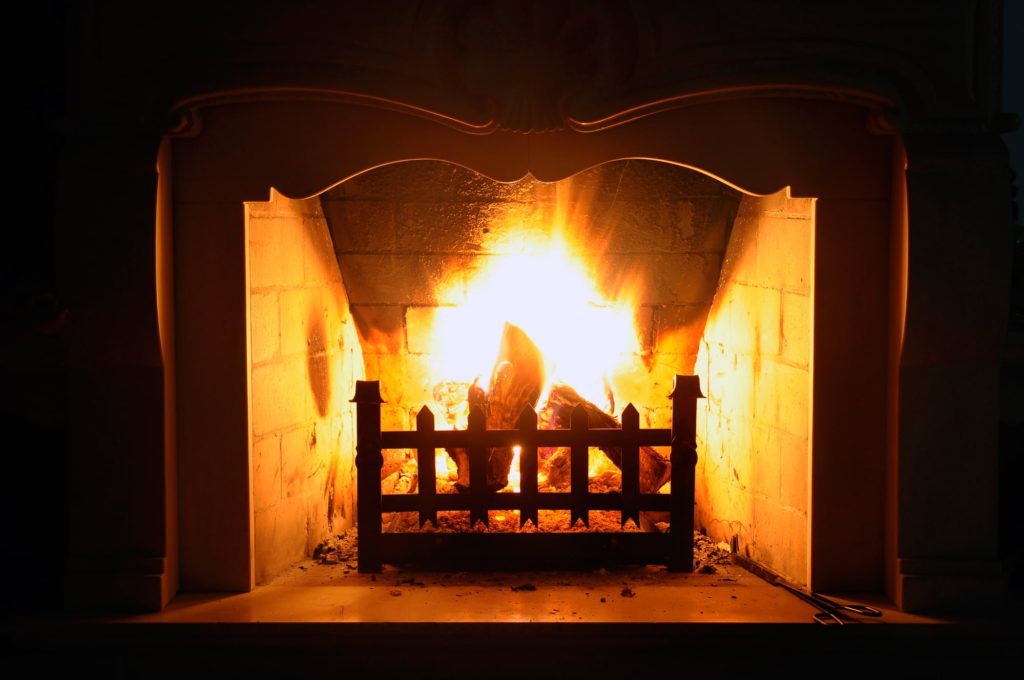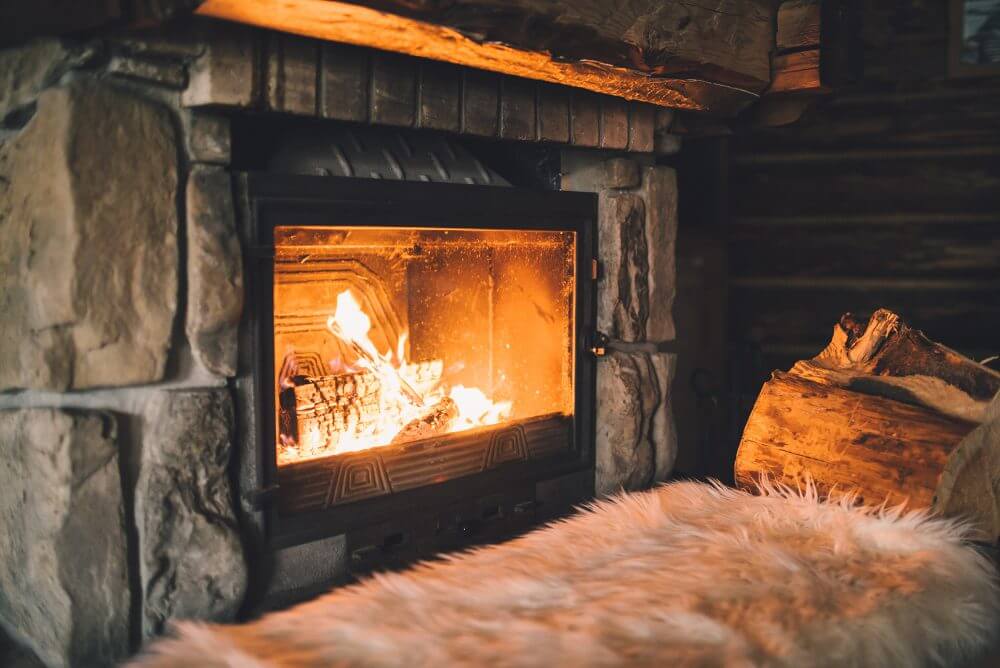9 Most Common Fireplace Issues and How to Fix Them
If you’re like most homeowners in Rockville, MD, you probably don’t think about your fireplace maintenance until there’s a problem. And by then, it’s often too late.
The fireplace maintenance is something that most people ignore – until problems arise. Then, suddenly, it becomes a big source of regret.
In this article, we’ll discuss nine common gas fireplace issues that can cause problems for homeowners. We’ll also provide solutions for each one.

1. Troubles are lighting the pilot light.
The pilot light in a gas fireplace is a tiny, constant-burning flame that activates the main burners only when heat is required. Therefore, the pilot light may go out, and the burners will not ignite at times.
The solution may be as simple as restarting the small flow of gas that feeds the pilot light and re-lighting it manually. However, if that doesn’t work, there may be excess moisture in the gas line. If this is the case, you should contact your local chimney service company and request a fireplace maintenance service. An experienced fireplace technician will drain and clean the line or perform any other repairs your gas fireplace may need.

2. Excess of Creosote
Creosote is a byproduct of wood burning. A tar-like black substance formed when the smoke from the wood-burning leaves the firebox it usually condenses.
Creosote is a flammable substance that burns at extremely high temperatures. Creosote is potentially a cancer-causing material when unburnt. Therefore it must be removed with caution.
When there is creosote buildup in your fireplace, this can turn into airflow restriction, which instead of releasing the smoke outside, causes the smoke to enter the house; this is known as a backdraft.
To prevent creosote buildup, homeowners in Rockville, MD must have the fireplace inspected and cleaned regularly, preferably by a CSIA certified professional.
3. Pilot light malfunction
The thermocouple in gas fireplaces regulates gas supply to the pilot light as long as active combustion occurs. This is achieved by sending a small amount of power into the gas valve whenever it detects heat, telling it to stay open. Therefore, if your pilot light only stays on for 20 to 40 seconds but then goes out, again and again, your thermocouple is most likely the reason.
Sometimes, thermocouples are not linked or fastened correctly. It’s often sufficient to check that all wires, screws, and tubing are connected correctly to repair this gas fireplace problem. If this is not enough, you may require a new thermocouple. Don’t try to adjust your thermocouple yourself. Instead, reach out to a certified chimney service company like ours and request a visit.

4. Obstructions in the chimney flue
Chimney flues are often the place of choice for birds and other animals to build their nests. If there is a nest in your fireplace, you will notice immediately after starting a fire since the smoke will begin to enter your residence.
To avoid this, make sure to install a chimney cap; this will keep animals out while allowing the smoke to escape. Like leaves and branches, other debris may accumulate in your chimney cap if you don’t inspect it regularly. If you live in Rockville, MD, or surrounding areas and are interested to learn more about our chimney cap installation services, click here.
5. The chimney is too short
A chimney that is too short or nonexistent, can prevent adequate draft, which may lead to combustion problems. A chimney must extend at least three feet above the highest point of the roof and at least two feet above any other objects within ten horizontal feet to vent smoke efficiently and regularly. If it doesn’t, back-drafting may occur due to high winds and other elements.
How to solve it? Purchase and install a supplementary section of chimney pipe on the top of your chimney. Unless you have prior experience and the necessary safety equipment for climbing on your roof, we recommend that you contact your local chimney service company for this.
6. Not Cleaning Your Gas Fireplace
When it comes to your gas fireplace maintenance, there are various reasons why you should do it regularly. Regular gas fireplace maintenance will prolong the life of your fireplace and prevent problems like gas leaks, lower flame height, and decreased heat output from occurring.
When performing maintenance on your gas fireplace, make sure to turn the gas off and check if the fireplace is completely cold. Next, remove the grates and vacuum any dust or debris from all surfaces, including the burners. When it comes to glass cleaning, you should only use manufacturer-approved solutions to check for cracks while you’re at it. Next, remove any decayed or malfunctioning artificial logs to avoid any future problems. Finally, have a certified chimney technician check your vents, flue, and fireplace for any potential issues.

7. Low Heat
If your fires aren’t burning well or giving off much heat, it’s possible that low-quality firewood is to blame. One common mistake among wood burners is using moisture excess wood such as freshly cut or “green” wood. This prevents the fire from burning as hot as it should. To avoid this, always make sure to burn seasoned wood that has been dried out months before its use.
8. Closed or Stuck Damper
A fireplace damper is a metal flap that regulates the amount of heat in your house by adjusting how open or shut it is. When a fire is lit, must be a small opening for the smoke to escape via the fireplace and for drafts to be maintained. If you don’t open the damper, smoke will flow into your property and put your health at risk.
When a fire is first lit, ensure the damper is fully open and keep it open as long as combustion continues. Sometimes the hinge mechanism of the dampers gets clogged with dirt, creosote buildup, or rust.
Clean the damper and hinge thoroughly with a wire brush once a week when the fireplace is not in use, then lubricate the hinge with a creep-like oil. Allow the oil to seep into the hinge before working the damper open and shut several times.
9. Cracks in the Fire Brick
Fire bricks are masonry blocks used to line all fireplaces. These are designed to endure the full force of a fireplace’s heat, but they don’t last forever. Fire bricks can crack if they are not installed correctly. Cracks might result in hazardous gases leaking into your home, so any fractures or damage to your fire bricks must be attended to immediately.
If you’re a pro, go for it. Otherwise, get a fireplace expert in to replace the cracked bricks. If you are interested in fireplace restoration services in the DMV area, click here.

Thankfully, each fireplace issue mentioned in this article can be resolved. Many people even do it themselves when they feel they have the proper knowledge to do so, yet we encourage and advise you not to try and solve them if you are not qualified for it since this could put you and your home at risk.
Whether you opt to do it yourself or call for professional help, it’s essential to be aware of these issues and their causes to prevent them from happening in the first place.
Remember to perform proper maintenance to your fireplace regularly. If you’re having trouble with any of these fireplace maintenance issues, do not hesitate to reach out for help with certified professionals to ensure your fireplace and the safety of your home are in the right hands.
